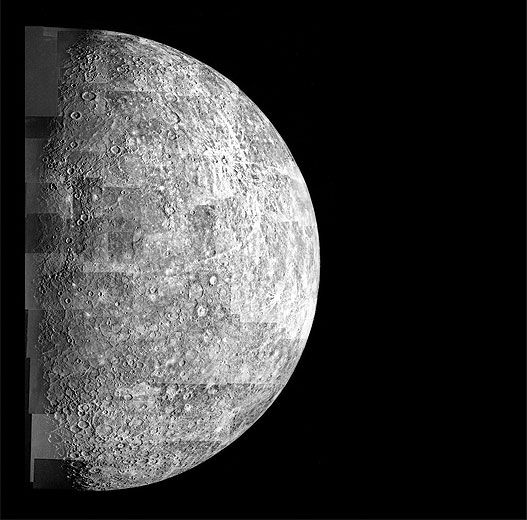Then & Now: Mercury Unmasked
Then & Now: Mercury Unmasked
/https://tf-cmsv2-smithsonianmag-media.s3.amazonaws.com/filer/Then_and_now_mercury_FLASH.jpg)
A NASA spacecraft is stripping away some of the mystery that has shrouded Mercury for decades. For starters, planetary scientists finally know what the solar system’s innermost planet looks like, thanks to a probe known as MESSENGER (for MErcury Surface, Space ENvironment, GEochemistry, and Ranging).
From two flybys in 2008 and a third last fall, scientists now have a map of 98 percent of the planet (only the poles are missing). The last mission to Mercury—three passes by Mariner 10 in 1974 and 1975—was able to photograph only about 45 percent. “The fact that more than half the planet had never been seen is now history,” says Sean Solomon, MESSENGER’s principal investigator and a planetary scientist at the Carnegie Institution in Washington, D.C.
MESSENGER also settled a 30-year debate over whether Mercury—with a molten iron core, like Earth—has volcanoes: It does, plenty of them. At least 40 percent of the surface consists of smooth plains, most of which are ancient lava flows. When Mariner 10 flew past, it “didn’t see any clear evidence of volcanoes,” says Solomon.
Another surprise is that MESSENGER did not see a highly magnetized crust, though Mercury’s core generates a global magnetic field. Mercury and Earth are the only planets that have such fields (Mars once had one). Mercury’s is much weaker than Earth’s, but studying its geometry and origin—along with the planet’s surface features and composition—“offers a window into the processes of planet formation that led to our Earth but with a different mix of processes and a very different final planet,” says Solomon.
In March the spacecraft begins a year-long orbit of Mercury, and it may be able to solve one of the planet’s biggest unknowns: whether water ice exists on the floors of its dark polar craters. “That mystery has been with us for 18 years, since radar astronomers discovered those floors,” says Solomon. Though Mercury is one of the hottest planets, with daytime temperatures that reach 800 degrees Fahrenheit, its poles could harbor water ice: Because the planet is not tilted on its axis, its poles stay at a constant –350 degrees. The radar analysis suggests that the ice is clean of impurities, indicating it might have come from comets millions of years ago.
Paul Hoversten is the executive editor at Air & Space.
